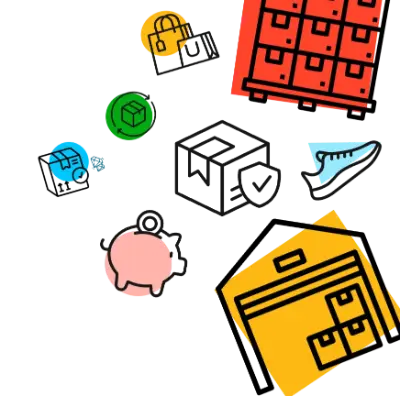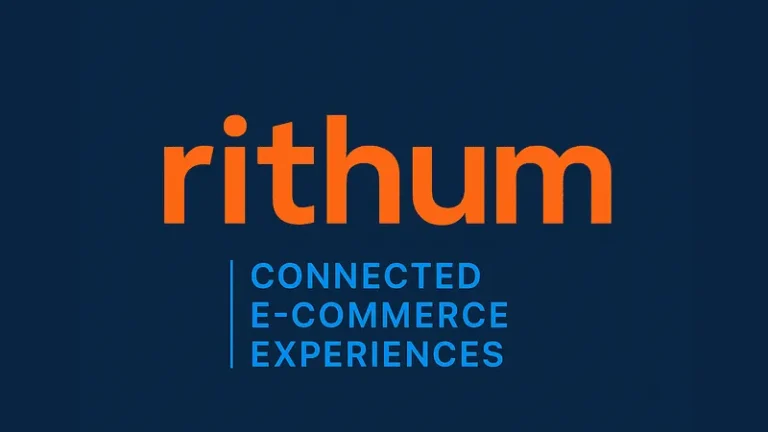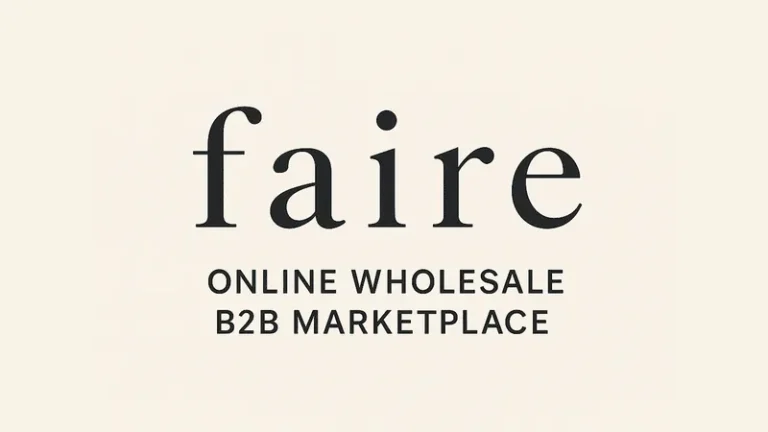Profitable Order Fulfillment Strategies for Shopify Ecommerce

Last updated on February 3, 2025

Listen to podcast here.
Podcast: Digital Marketing Intelligence for Shopify – Ask the Experts – Episode 94 – Manish Chowdhary (E-commerce Case Study) – RSS.com
This podcast focuses on providing insights and strategies for digital marketing and eCommerce on Shopify. The topic of the episode is profitable order fulfillment strategies, and the guest is an award-winning shipping logistics entrepreneur and eCommerce expert named Manish Chowdhary. He is the founder of Cahoot, the world’s first peer-to-peer order fulfillment services network, and holds 10 US patents for his inventions. The episode discusses how the right order fulfillment strategies can lead to faster growth, particularly in times of financial stress and inventory supply chain issues. Manish shares his insights and expertise on eCommerce strategy, warehouse logistics optimization, and supply chain issues.
Marissa Morgan:
Welcome to Digital Marketing Intelligence for Shopify, Ask the Experts. Our weekly podcast and video show, offers Shopify’s ecosystem of brand owners, store developers, app providers, investors and marketing agencies, insights from case studies and discussions, with marketing and eCommerce experts, grow faster with tips, tricks, and proven strategies, and learn what’s new in eCommerce digital marketing for 2022 and beyond.
Hello everybody and welcome to our next episode of Digital Marketing Intelligence for Shopify, Ask the Experts. I’m Marissa Morgan, I’ll be your show host today, and I’m also the business development manager for Ngagge. On behalf of myself and the entire team at Ngagge, I want to welcome you to today’s show. Today’s topic is all about profitable order fulfillment strategies and why right now they are the key to faster growth, especially during crazy financial times and all of these crazy inventory supply chain issues that we’re having across the globe. Our guest is an award-winning logistics entrepreneur. He is an eCommerce expert. He is the proud owner of more than, well, let me say, he’s got 10 patents, okay, that’s pretty incredible. And he’s also the founder of Cahoot, the world’s first peer-to-peer order fulfillment services network. What is that? Well, we’ll find out more about what that means in just a moment, when I introduce you to our special guest,
Before I do, of course, a quick word from our sponsor, Ngagge, before we get started. We’re excited to share that Ngagge recently launched our first app called SMS Messaging for Shopify Stores, in May of 2022. So that app is live right now, and what that app does is make it incredibly easy for Shopify store owners to not only build their customer lists faster, increase sales, but also save time with automations and create personalized campaigns to really improve the customer shopping experience. With our SMS messaging app, there is no code support bots, so it’s very easy to install and use, even if you don’t have a tech team. And right now with open rates of email kind of sitting around 20% or maybe even less, I mean, think about it, when’s the last time you opened a business email that was maybe a marketing email that you didn’t ask for? I mean, maybe you didn’t even open it. Right now the SMS open rate is 98%, maybe even higher.
So the likelihood that if you are not using SMS marketing right now, that you’re missing out on business is very, very high. So you can check out our app, Shopify SMS, Ngagge Shopify SMS at www.ngagge.com. That is www.ngagge.com, where you can sign up for a free 30-day trial of the app. And with that trial, you’ll also get 500 free SMS messages to start using right away so you can take the app for a test drive. So if you’re not using SMS, no time like the present to take advantage of the Ngagge SMS for Shopify Store app, which is available right now, ngagge.com.
Okay, it is time for me to introduce you to our special guest. He is joining us from New York. His name is Manish Chowdhary. And Manish’s incredible career in eCommerce started in his dorm room. He actually founded multiple industry leading companies while in his dorm room at the University of Bridgeport. By the way, that’s Connecticut, that’s where I’m from originally, so we have a common tie there. He is a logistics entrepreneur who also founded Cahoot, which I mentioned is the world’s first peer-to-peer order fulfillment services network for brands and retailers. His specialties include eCommerce strategy, business methods innovation, inventory supply chain and logistics optimization. And as I mentioned, he holds 10 US patents for his inventions and has also been featured in couple small publications like the New York Times, Forbes, International Retailer, and many other leading publications. He is a 40 under 40 competition winner and holds an honorary doctorate, which is the highest honor from his alma mater. Cahoot, his company, was recently named a Spring of 2020 SourceForge Top Performer and is also a five star rated company, not only on Amazon, but also Shopify, which is impressive.
And if this wasn’t impressive enough, he’s got an active social life as well. He’s an avid traveler and he’s actually traveled to more than half of all the Caribbean islands, which I find very impressive. I’m a big island lover myself. And he’s also a big fan of an IPA and is a big fan of trying different IPAs. So much fun. Manish, thank you so much for joining us today. We’re excited to have you as our guest expert on logistics and fulfillment and what that ultimately means for companies right now in a time of crazy financial stress and inventory supply chain issues, and of course what that means for happy customers. So thank you so much for joining us today.
Manish Chowdhary:
Marissa. Thank you so much for having me, and thank you for such a generous intro. I think it is more than I would ask, and I really appreciate all your audience listening to this show today. So thank you.
Marissa Morgan:
Oh, you’re so excited to have you. And you know what, that was only half of what I could have said for an intro for you. I had to take some time and leave out some things for time’s sake. But you have a very impressive background, not only in eCommerce, but obviously right now with logistics optimization and helping companies deliver obviously their goods and their services to the end user. But I want to ask you, because this is something new to me, what exactly is peer-to-peer order fulfillment? What does that mean?
Manish Chowdhary:
Yes, Marissa, peer-to-peer order fulfillment is a term that Cahoot has coined. Essentially it is about collaboration. It is brands and retailers collaborating and working together to make free and fast delivery affordable, no matter which channel you sell on. So on the Cahoot platform, brands and retailers that have warehouses of their own, that have excellent fulfillment metrics for their own orders, and if they have excess space in their warehouse, they have the opportunity, for the very first time, to join Cahoot as a fulfillment partner. And those are the warehouses Cahoot utilizes to place our client’s inventory, the seller’s inventory. And putting them all together, Cahoot has created this large nationwide network. Maybe an analogy might be something like an Airbnb, how Airbnb helped homeowners unlock new revenue stream by renting out their spare bedroom or their spare apartment. So Cahoot is making that same opportunity available for millions of sellers that have warehouses of their own.
So this is a unique opportunity and the advantage of all this to our sellers, to our clients, is lower cost, is because we take all those savings and pass it back to our clients. So that is what peer-to-peer collaboration is all about and peer-to-peer order fulfillment services network.
Marissa Morgan:
Well, that sounds like a win-win, just like I feel, that was a great analogy, Airbnb has been a huge win for property owners because it’s true, there’s probably a lot of entrepreneurs and businesses out there that have the space and don’t use all of it. So why not go ahead and outsource that space to other retailers, other brands, other companies that are looking for space and create almost this incredible network, like a spider web of opportunity for different brands to have their product in different regions.
Manish Chowdhary:
Yes. And this is particularly more relevant in today’s economy because industrial space or warehouses, space capacity is at all-time low. In fact, you cannot find warehouse space even if you wanted to. And as a result, the rent is at an all-time high. So if you were to go to a traditional 3PL, a traditional warehouse, you’re going to pay exorbitant fees. If you’re looking to rent a new warehouse space, you cannot find, or if you do find, you would have to Ngagge in a multi-year lease at a premium pricing. So just like, again, I’ll take the Airbnb example, during the 2008 recession when Airbnb got its start, people were looking for more affordable ways to make money, to stay and live more affordably or rent a room more affordably. And that’s what Cahoot is doing in the current inventory supply chain and the fulfillment world, which is a boon for both the people that are fulfillment partners for Cahoot, but more importantly, the sellers that are looking for relief.
Marissa Morgan:
Well, I know there’s a lot of benefits and I think we’ll talk about some of those benefits during our time together today. But again, it sounds like a win-win, it sounds like great way to also, I mean, do something good for the environment, because if you have products that are within the same state as the buyer, obviously your carbon footprint in getting those products to those buyers is going to be a lot less, less potentially trucks on the road. And this is exciting to me, I just feel like there’s so many benefits all around from the obviously experience of the buyer to get that product in a shorter amount of time, which we know Amazon has really conditioned all of us to expect things within two days really, is almost the expectation now. Would you agree?
Manish Chowdhary:
Yes. In fact, two days was the expectation two years ago, Marissa. In fact, most Amazon buyers expect, if you’re living in urban areas like Manhattan or New York or Los Angeles, shoppers expect the delivery to be next day for most items. In fact, Amazon itself has been raising the bar on fulfillment. So almost 40% of Amazon’s products are being delivered in one day now. So two day was-
Marissa Morgan:
Two day’s old news?
Manish Chowdhary:
Yeah, it’s delivered. So the world is moving even faster. I know it’s crazy, but the shoppers, like if I wanted wanted soccer goalposts for my kids birthday party on Saturday and it’s Friday and I don’t want to drive and go and pick up and spend two hours. And so people will make decisions, shoppers are making decisions based on the delivery promise, and it’s so important too. And that’s where a lot of Shopify sellers, a lot of any seller, on any market, on any channel, can win big using delivery as a strategic competitive advantage.
Marissa Morgan:
I love that. I love that. And I can totally understand this must get it the next day kind of mentality because a lot of us in general, humans in general, we tend to juggle, we tend to multitask, we tend to procrastinate. And most of us are not always planning weeks in advance for the things that we think we’ll need because maybe we don’t even know we need them yet. So I think as a culture, the last minute shopping world has also increased in size and the number of people kind of acting in that space because now we know we can get things last minute. And I think just a lot of our listeners are going, “Yeah, I’ve done that before, where I’m like, shoot, I need this tomorrow.”
So let’s just, for our audience watching the video show of today’s talk, I’m going to share a quick outline, for those of you listening on the podcast, we’ve doven into this, but I’m going to read through this for you. Again, today we’re talking about profitable fulfillment strategies and really why they’re the key to faster growth, especially right now during difficult financial times. We’re going to get into why you can’t rely on platform locked services like FBA. We’ll also have Manish walk us through how one to many solutions unlock new growth opportunities, increase economies of scale, and reduce complexity as well. And I know as we work through this talk together, Manish is going to share countless examples of different clients and what they’ve done and how they’ve connected to gain that edge through especially the peer-to-peer order fulfillment opportunity. So I guess, can you help me understand this concept of FBA, this platform lock fulfillment and what FBA is? Because that’s a term I’m not super for familiar with.
Manish Chowdhary:
Sure. FBA, as lot of our audience probably know, is fulfillment by Amazon. And we’re calling it platform locked fulfillment or platform locked services because FBA, for example, would give a different treatment to orders that originate from Amazon and how they fulfill them, and I’ll break this down for you, as opposed to orders from some other channel, because they’re playing favorites. Another example would be Walmart fulfillment services that is designed to help Walmart sellers succeed on Walmart alone. But when you think about the seller, most sellers, especially the Shopify sellers are selling on their DTC site and many of them are selling on marketplaces, both Amazon, Walmart, eBay, could be Target, could be Macy’s, but they’re also doing wholesale business. So if the merchant were to select a platform locked service, which means they need to now find other services or other order fulfillment solutions for their other needs, and that creates increased complexity, increased cost, and it is punitive because FBA, as you know, if you send your products to FBA, you get access to the Prime shopper, but it’s very difficult to get access to them if you don’t use FBA services.
So there are a lot of things that are happening and there is an antitrust case that’s pending as well, it’s called coupling. And I can take a pause here if you have questions, but I can keep breaking this down further into why this is not the best choice for the sellers, what are the advantages and what are some of the disadvantages.
Marissa Morgan:
No, I’m glad you broke that down for me. So FBA is fulfillment by Amazon, and as a customer, this helps me understand why sometimes when I’m shopping on Amazon, certain products can be shipped to me within that day or two timeframe, and then others are not. Even if it’s the same exact product or just from a different company, it’s because some of these companies have this agreement or Amazon actually holds this merchandise, versus other companies that may be selling through Amazon, but shipping themselves basically. You’re just helping me understand all the things that are happening behind the scenes, especially from a consumer perspective. So sounds like there’s benefits to FBA or some of these platform locked services, but then also there’s definitely some drawbacks as well.
Manish Chowdhary:
Yes, most definitely. I mean, there are some major benefits to platform locked services. For example, FBA, you get access to the Prime shopper. The minute you send your products to FBA, they are available to the Prime shopper, which is the most affluent, the high spenders on Amazon. And these are people that are over 150 million or over 100 million members in the US alone, which is probably one out of three. If you take out the kids and the elderly, I mean-
Marissa Morgan:
By the way, I call the Prime shoppers part of AA, and that’s Amazon addicts. I am a Prime shopper, but kind of by default, my husband’s more of a shopper than I am. But yes, I can feel the money that is spent through especially these Amazon Prime accounts. And when people shop at the top, they have the option as a Prime member to say, “Hey, I just want to see the Prime options,” which are the options that are probably using FBA.
Manish Chowdhary:
And many times I think Amazon only displays the Prime offers by default or Prime offers get priority over non-Prime offers. So if you, Marissa, are a Prime member and you log in with your Prime account on Amazon, the chances are that the products that you will see will be primarily Prime eligible products before you see non-Prime eligible. So because Amazon is all about having the customers having a great shopping experience, which means not only are you finding the wide selection of products, low prices, but also amazing delivery, which is one or two day, which has been one of the top advantages that Amazon has over other retailers like Walmart, Target, Macy’s, and that they continue to drive the flywheel through that delivery experience.
Marissa Morgan:
Now, I know you wanted to get into why you can’t rely, so obviously there’s benefits, but what is the main reason or reasons that you think eCommerce brands and people who are obviously shipping to customers, can’t just rely on the platform locked services?
Manish Chowdhary:
Several stories. Just was speaking with a large seller, this is one of the top Amazon sellers, and you would think that they would have an in with Amazon, they would be given preferential treatment, and these are people who are doing nine figures on Amazon. So not seven figures, not six figures, nine figures. And they wake up one day and they find that their inventory limit or how much inventory you can send to Amazon has been slashed to less than half. And that is a huge problem because Amazon just announced the second Prime Day, which is coming up in October 11 and 12. So now how are you going to manage and how are you going to … if your inventory limits are slashed, that means you cannot send all your products to Amazon. You cannot send them in enough quantities. And on top of that, Amazon is taking very long to receive these items.
So from the time you send the items to Amazon, it could take weeks for them to be received. And during that time, you cannot send them anything new. And if your product goes out of stock, let’s say you have five days of inventory and it’s going to take Amazon 10 days to receive it, after five days, your product goes out of stock, which means your seller rank drops, which means your inventory performance index, these are all Amazon terminologies, which is the way how Amazon keeps track of how much space or how much limit to allocate to each seller because sellers do not have unlimited quotas, so as to speak, they’re limited and restricted.
So now while there are many advantages, but if you’re a seller, now you are in a jam that if Amazon is such an important sales channel, you rely on that for your sales. You bought containers and containers of inventory that you’ve paid for from overseas, now your money is locked up and you can’t sell it on Amazon because you can’t get into FBA. And if you don’t get into FBA, you don’t get access to the Prime shopper, who are the ones who make most of the sales. So one of the challenges is that. There are many more challenges, I can talk about a few more. The second is multi-channel fulfillment. So let’s say you get all your inventory into Amazon, you’re selling on Shopify and you want to fulfill Shopify orders using your Amazon fulfillment services. Guess what? You’re going to pay up to 50% more to Amazon to fulfill your Shopify order because Shopify and Amazon are at war.
So Shopify went and acquired another order fulfillment provider called Deliver. So that’s the same thing, Shopify is not there to promote Amazon sales. So now if you start using Deliver, for example, which is a more recent acquisition, so this is a prediction, that they’re going to create policies that favor Shopify. So while things are good for the shopper, it is very difficult for the merchant to make money. And if the seller does not make money, seller does not profit, they’re not going to stay in business, and therefore they cannot innovate, they cannot bring the next product. So this becomes almost a self-fulfilling prophecy, that it was good to a point, and at some point it becomes bad and the sellers have to find other alternatives that are neutral. To ship an order, whether it comes from Amazon or Shopify or eBay, it’s the same effort, same everything, why should one cost more than the other?
Marissa Morgan:
And at the end of the day, it’s so sad to think that the only people that end up happy are the huge companies like Amazon and the consumer, because the middleman, which is the creator of the product or the inventor of the product or the brand founder, it’s like these people have put in so much work to create what they’ve created. So it’s so sad to think that the one person who ultimately gets the most screwed is the person who’s got the beautiful product to offer.
Manish Chowdhary:
That’s exactly it, and that is why we created Cahoot to be platform-agnostic. Same thing with Walmart. Walmart is favoring Walmart fulfillment services. So if you want to get on the fast track to get the two-day badge to attract the Walmart shopper, Walmart is doing, but it has tons of limitations, Walmart fulfillment services will not ship products internationally. So if you get an order from overseas, now you have to figure out another solution. In case of FBA, any product that’s oversized is very expensive to ship. So if you want to get access to the Prime shopper, it’s a problem. Q4, which is the holiday season, storage fees for FBA are three times as expensive as the rest of the year. So you can imagine, one, you can’t get your product, you’re lucky if you get it in, if you get it in and if you get it in late, if you miss out on sales, you’re going to pay Amazon three times.
While there are benefits, of course, it is not all disadvantaged, but these are the limitations, these are the challenges that sellers are facing and that’s why we created Cahoot to make it a level playing field. We want to think like the seller, what’s best for the seller? And if you want to do wholesale, we know most ecommerce brands want to also partner with other independent retail stores. For example, we have a client called Cali’s Books, they sell to Barnes & Noble, they sell to Nordstrom, so they want to send pallets and cases or books to these local bookstores. And that’s not something that FBA can do, that’s not something that WFS can do. So these are the challenges with platform locked services, because they were not designed to promote the seller, they were designed to promote the revenue for the platform.
Marissa Morgan:
Gosh, at the end of the day, something that we talked about before the show too, the end of the day, you said, and I’m going to quote you, I hope that’s okay, you said half of your shopping experience is your shipping experience. So what’s crazy is everything you’re talking about, the good, bad, and the ugly, all obviously affects the business, let’s say the eCommerce business. But the eCommerce business, especially the one that understands the consumer experience, the customer experience, that business is doing its best to make the best choices and put the best options in play so that ultimately the consumer has a great experience.
So it’s all intertwined, but it’s like everybody’s got their own, selfishly they have their own interests at play. And it’s kind of crazy to think that Amazon makes money, percentages off sales already, and you think that was the original business model, they make money by selling Joe’s product, they make a little cut. But now it’s gone way above that and they’ve now monopolized the entire process of selling and shipping, so that not only are they making a profit on the products themselves, but they’re making a ton more on housing, and like you said, getting the products in. It’s just insane to me. It’s insane. But now I know why Jeff Bezos has private jets and all this stuff, I mean, he’s raking in the dough, it’s insane.
Manish Chowdhary:
Well, you’ve forgotten the most biggest cash cow that Amazon has just created, advertising. Previously it was you get paid to sell the item on Amazon, that was great. Now in order to sell the item, you need to spend an insane amount of money on advertising.
Marissa Morgan:
To be the top featured product of that specific category for this many hours of the day or whatever. It’s insane.
Manish Chowdhary:
And then where’s the next area to get a larger share of the seller’s wallet, is the order fulfillment services. Because if I can create coupling, it’s called, which is what the US Antitrust is calling it, in their proposed bill, that it’s like Google favoring Google reviews over Yelp reviews for restaurants. But because you’re using the Google Chrome browser, you don’t have much of a choice because Google makes the decision on-
Marissa Morgan:
What you see.
Manish Chowdhary:
… restaurant reviews to show, so that is where there’s a problem. And especially the ecommerce brands on Shopify are looking to create a direct relationship with their customers, the DTC brands. So I spoke with a DTC brand this morning, that is into sustainability, they have these eco-friendly bags and so on, and they’re using FBA, but FBA uses plastic for all their shipment. So it goes against the ethos of the brand, that brand wants to sell eco-friendly product, but it comes loaded with plastic packaging and plastic tape, and that’s a big problem. But then because they make a lot of sale on Amazon, it’s very hard, very difficult for them to distance or move out of Amazon, then they lose the Prime shopper. So there’s some major challenges.
Marissa Morgan:
Well, I love that Cahoot is creating, let’s say, a more fair and better and economically ad advantageous way for people who have a product or a brand or eCommerce business, to be able to give the customer a great shipping experience and ultimately kind of stay out. It kind of just sounds like an awful rat race. It sounds sadly like a dictatorship. But tell us a little bit more about why shipping and order fulfillment is such a big part of the customer experience, because I know we were talking about that right before we hit record and started our show. You said it’s not just about the website anymore and the website being beautiful, and then you said that half your shopping experience is your shipping experience. Share a few thoughts you might have on that whole idea.
Manish Chowdhary:
Exactly right, Marissa, half your shopping experience is your shipping experience. I’ll take you down the customer journey. Customer comes to your website, they find your product, they love the product, got great pricing, and on that product page they decide to add the item to cart. What’s the next thing they’re thinking about? When will this product arrive? Let’s say I have a time bound shipment or just as we as humans are, we hate uncertainty, even if it’s going to take four weeks, tell me now, in the absence of clear, concise instruction, it is left for the shopper to guess, and that guessing leads to cart abandonment. And more importantly, let’s say some Shopify and other DTC brands will display four to seven days or three to five days.
Now it’s very difficult for the shopper to figure out when does the clock start? Four to seven days, is it four to seven business days? Is it four to seven calendar days? Is it starting tomorrow? Is it starting today? So the customer cannot make those, you’re asking the shopper to do too much math and they’re not willing and cart abandoned. So now let’s say you’ve done all that great stuff, you’ve got the shopper, they’ve even went through the checkout, now they’re thinking two to three days, then start putting all those customer inquiry, where’s my order, because customer has no visibility onto when the order will arrive. And that’s where some of the app that you have even, Ngagge, would be very, very effective in customer communication, because now the order has to be shipped and the merchant has to balance the shipping cost because customers are more and more used to free shipping, free and fast shipping.
So if your product is shipping from let’s say Florida to California, you’re paying the highest shipping rate for what we call zone eight, because as the furthest distance is traveling, or from Florida to Seattle, Washington. One, it’s going to take longer for the product to arrive and it’s going to cost the seller more because everything nowadays is based on the distance the package travels, the dimension of the packaging and the weight of the item. So you need to have your products widely distributed. And then because if you don’t do that, you have less, fewer chances of getting a positive review from the customer because if the product arrived later than they expected, order cancellation rate goes up and then certainly the customer delight element goes down so that the ecommerce brand recall value suffers. So there’s several reasons why the shipping and delivery experience is so paramount to the overall customer experience.
Marissa Morgan:
Well, I would love to know a little bit more also about this idea of peer-to-peer order fulfillment, because I know people are probably listening right now going, “Huh, I’ve only been using Shopify or I’ve been looking into …” So is Deliver currently active on Shopify?
Manish Chowdhary:
Yeah, Deliver is active. I mean, Shopify acquired them a few months ago.
Marissa Morgan:
Okay. So it is a way right now for people on Shopify to be fulfilling their orders through Shopify’s own kind of in-house process. But if someone’s at home right now saying, “Oh my goodness, this is the answer I’ve been looking for.” They ship all over the United States, maybe they have been using order fulfillment by Amazon and have been incurring extra fees and extra overhead and the stresses of it, peer-to-peer or as you said, one to many solutions obviously give more growth opportunities, allow businesses to keep more money in their pockets. So what is the first step for a company, whether they’re on Shopify or they’re on another platform, or maybe they are just operating through a website and it’s kind of a smaller in-house system right now, what is the first step to becoming a part of what Cahoot has created, this peer-to-peer order fulfillment process?
Manish Chowdhary:
Yes, Cahoot is the most merchant centric and merchant inclusive order fulfillment services solution on the market. So if you have a warehouse, we’ll use the Florida example, if you’re a merchant in Florida, you need to have your inventory distributed in a few different places. Let’s say you want to start small, you’re sending a lot of orders to California, you’re sending a lot of orders to Chicago or New York. Then Cahoot has the software and the technology where you don’t have to dismantle, you don’t have to get rid of your order fulfillment operations. You can keep your order fulfillment operations and only choose to outsource a portion of the orders that would be served, let’s say by Cahoot, in those regions. And that is very unique to Cahoot because that kind of technology is not accessible because it’s very complicated for merchants to now figure out which order should I fulfill, which order should Cahoot fulfill or which orders should somebody else fulfill.
So we don’t believe in rip and replace, we believe in letting the merchants pick the path that’s most comfortable, that they’re most comfortable with. And then soon they realize, oh wow, my California customers are getting their products faster. I’ve cut my shipping costs down by 20, 30%. And the Cahoot technology also helps them improve their shipping in their own warehouse because all that great innovation that we have, the 10 patents that you mentioned and so on, we also give the seller those tools to do that efficiently in their own warehouse. And of course for the people who want 100% outsourcing or they’re using a provider that they’re not happy with or they believe that they’re not happy with, you can come to Cahoot, fill out or contact us form, we can do a free savings analysis, we can evaluate your current costs and we can tell you how much money could Cahoot save you.
And that alone is very valuable because half the battle is knowing the power of information and power of what is out there, what can help my brand. And with Cahoot, if you go full-blown and you spread your inventory to Target, let’s say two-day delivery, now you turn on and make that promise on your website, be bold and say that on your website, “Hey, two-day guaranteed delivery,” watch your conversion rate soar. And then if you combine that with an SMS solution, like Ngagge, you’ve got one-two punch, and that’s what helps the sellers and the shoppers to get that DTC promise and the brand, that is that what an Amazon like experience is on every other channel, not only on Amazon.
Marissa Morgan:
I love this and I love the passion. We are in two different parts of the world right now. You’re in New York, I’m in Minnesota. I literally, I know you guys are listening on the podcast and you can’t see Manish, but I can feel the passion coming out of the screen. He’s beaming and you’re smiling from ear to ear. And as you were talking, by the way, I was listening to you and I pulled up the website, which I had looked at earlier, but right away when you were talking and I went to your website, boom, I happened to notice, because you were talking about Cali’s Books, but I saw this great testimonial from Cali’s Books and it said, “The most impressive part of working with Cahoot is the speed at which B2C orders are fulfilled and the consistently affordable shipping rates obtained.”
And then it says, “With our peer-to-peer network, you get faster, more reliable order fulfillment, at a lower cost and you can boost your conversions with one and two-day shipping,” and that you guys integrate with Amazon, Walmart, eBay, Wish, Shopify, BigCommerce, Facebook, so many. So I think this is a great place to kind of end our talk, because not only did you share obviously the importance of order fulfillment in a shopper’s experience, half your shopping experience is your shipping experience. I think that’s a takeaway that everybody can easily understand. But you shared examples of what works okay, benefits to it, some of the struggles that come along with it. But then ultimately, and I love it, you can totally tout your company and what you guys do because really you offer a wonderful way to navigate something that is very complex, but it doesn’t have to be.
Manish Chowdhary:
Right. And last but not least, an opportunity for ecommerce brands and retailers who have warehouses, to make money. How can we forget that? Because Cahoot is the only organized option they have to make money from their warehouse, and we’ve made it super-duper simple. So for any listeners who have a decent size warehouse, you’ve got great operations and people, this is an opportunity for you to make money. Fill out the contact us form on our website, cahoot.ai, and that may be another opportunity, a way for you to defray some of your cost, not only to elevate your order fulfillment and shopping experience, but also make some extra cash that you can put back in your business.
Marissa Morgan:
I love that. So the website to visit Cahoot and find out more, whether you have a warehouse that you’d love to rent out, basically rent out, lease out some space, share some space, or you have a product that you would love some help getting to your end users in a more timely, more eco-friendly, more economically savvy fashion, you want to be in cahoots with Cahoot, it’s www.cahoot.ai, so that’s www.cahoot.ai. And Manish, if our audience would like to connect with you, do I have your permission to share your LinkedIn as well?
Manish Chowdhary:
Absolutely. I love chatting with sellers, exchanging notes, because I learn so much by speaking to brand owners, operators, because they are in this every single day. So please connect with me on LinkedIn, I’m very active and I promise I will reply.
Marissa Morgan:
You can find him very simply by typing obviously linkedin.com/in/manish, M-A-N-I-S-H, -chowdhary, C-H-O-W-D-H-A-R-Y. And again, for those of you listening on the podcast, I’ll spell his name one more time for you. Manish, M-A-N-I-S-H, Chowdhary, C-H-O-W-D-H-A-R-Y. Manish, this has been, I was going to say, this has been such a great show, but I feel like … as much as I want to say, I feel like we’re just hitting the tip of the iceberg, I do feel like we really got through a lot in a short amount of time and you really helped me, and I know our audience as well, understand more just about the order fulfillment process in general, but the different avenues that are currently available, the pros and cons to each, and a really cool alternative that I think a lot of retailers and eCommerce businesses have not thought about, which is peer-to-peer order fulfillment. So thank you so much for sharing all of your insights with me today and our audience.
Manish Chowdhary:
Thank you, Marissa. Thanks again for having me.
Marissa Morgan:
Oh, it has been a pleasure and I want to congratulate you and Cahoot as well on all of the awards you’ve been winning, on the successes. I know you and I just connected on LinkedIn, so I’m going to definitely keep my eye on you, and I’m sure there’ll be more awards, more patents, and more fortune in your future. So congratulations. And for those of you listening right now, again, you’re probably listening to a podcast, I’m sitting face-to-face through a screen with Manish, the energy and the pleasantry and the joy in this man is just palpable. So check him out on LinkedIn, Manish Chowdhary, and check out www.cahoot.ai to find out how you can benefit from his, truly something you invented, which is peer-to-peer order fulfillment. Thank you again, Manish, and have a great day.
Manish Chowdhary:
Thank you.
Marissa Morgan:
That was an awesome show. I love guests that are passionate about what they do, and when you can feel the passion through a screen, that, to me, is just the coolest thing. So I have so much credit and respect for not only the 10 patents and all the experience that Manish has. He’s clearly a very smart man, starting businesses back in his dorm room at Bridgeport. That right there alone is pretty impressive. But when you pair that with someone who has such passion and joy of life, you really get a business owner that is not only savvy, but someone who is really empathetic with helping people and wanting to really make a mark and make a difference in the world, and especially in the world of eCommerce. So go Manish, go Cahoot. You guys, make sure you check out Manish Chowdhary on LinkedIn, connect with him, let them know you heard the show through the Ngagge podcast.
And also be sure to check out cahoot.ai, and that’s C-A-H-O-O-T, .ai. Whether you are an eCommerce brand looking for help with your order fulfillment process, maybe you even want some help just deciphering what you’re doing now, he said he often helps companies kind of work through what they’re doing now and give them a little screenshot of what that means. Or if you have warehouse space and you’re looking to capitalize on that and put a little extra money in your pockets or in your business, Cahoot can also help you do that. Awesome show. I want to thank you all so much for joining me and let you know that we always welcome you to send us referrals if you have someone you know that is a guest expert in the world of eCommerce and specifically eCommerce platforms like Shopify, Wix, WooCommerce.
If you’re interested in being on this show, you can connect with me and send an email to marissa.m@nggage.com. That’s M-A-R-I-S-S-A .M@ N-G-A-G-G-E .com. And of course, you can connect with me on LinkedIn and you can also connect with our company page on LinkedIn as well. For our company page, just look for the rainbow-colored cog wheel, connect with us there, and you can see all of our past shows as well. Speaking of shows, I do want to let you know that there’s an easy way to check out our podcasts, and you can do that by going to www.ngagge.com/podcast-library. That’s where you’ll find a complete library of all of our shows, with all of the guests. It’s a great place to go to if you have any questions about digital marketing, eCommerce platforms. We love to be your trusted source for digital marketing intelligence, especially when it comes to Shopify and eCommerce platform, so check it out. It is www.ngagge.com/podcast-library.
Thank you guys so much for joining me today. As always, I hope you have a wonderful rest of your day. We’re starting to get into the holiday season. I’m not sure when you’re listening to this podcast right now, but right now it is September, this show is dropping in September. So check back with us, we’ll be having shows every single week throughout the holidays and into the new year, with lots more to come in the world of digital marketing intelligence. And don’t forget to check out ngage.com for the Ngagge SMS for Shopify App free trial available with 500 free messages. Check it out and take advantage of all the opportunities that SMS messaging has for you and your ecommerce brand. You guys have a great day, and thanks again for joining me.
Turn Returns Into New Revenue
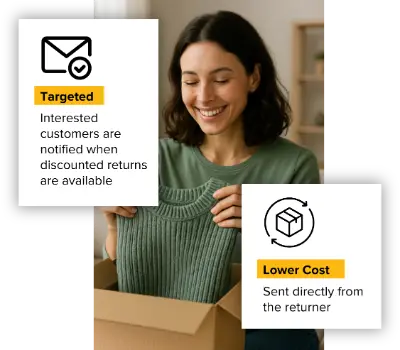
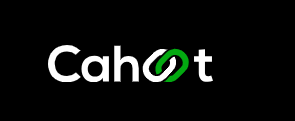
 38 minutes
38 minutes